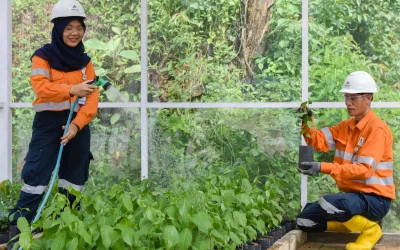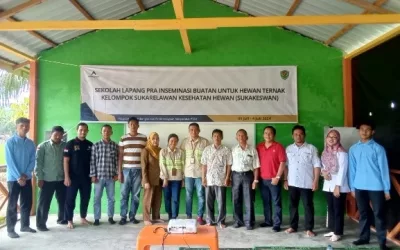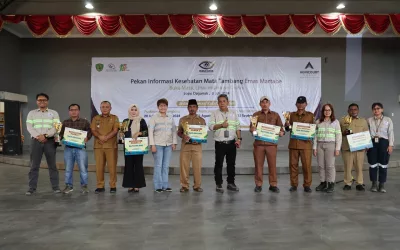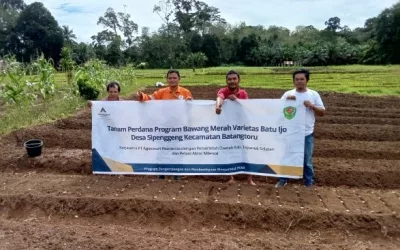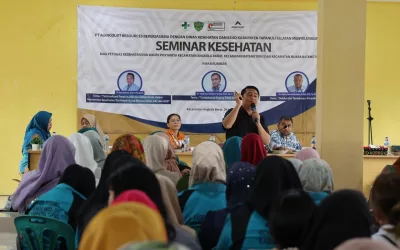On March 25, 2022, the Minister of Environment and Forestry (LHK) of the Republic of Indonesia stipulated Minister of Environment and Forestry Regulation Number 5 of 2022 concerning Wastewater Treatment for Mining Businesses and/or Activities using the Constructed Wetlands Method.
This regulation requires every business and/or activity that produces process water to treat the water before it is released back into the environment and encourages the use of technological standards of the Constructed Wetland method for mining process water treatment, which aims to prevent water pollution and protect the environment.
Constructed Wetlands are ecosystems specifically designed to purify polluted water by optimizing physical and biochemical processes involving plants, microbes and waterlogged soil. In general, Constructed Wetlands work optimally by using aquatic plants. However, to determine the most appropriate species of plants and microorganisms to adsorb contaminants in wetlands, it is necessary to conduct trials on the species of plants and microorganisms according to the actual characteristics of the wastewater. Alternatively, as different systems have different objectives and standards, we can adapt from research on the application of Artificial Wetlands that have the same process wastewater sources characteristics.
Things to consider in choosing plants are tolerance to wastewater, being able to decompose and become an adsorbent for compounds or elements contained in wastewater, and its environmental impact. However, to determine the plant’s level of tolerance to wastewater, it is necessary to observe the plant growth rate in wetlands first.
Constructed Wetlands are known to have several benefits such as effective wastewater treatment, energy efficiency, lower cost compared to conventional systems, can be a medium for recycling organic waste through the use of compost products, providing aesthetic value, commercial and can function as a habitat for aquatic life and wildlife with the development of adapted flora and fauna.
To use Constructed Wetland technology, three conditions must be met:
- Location
The location of Constructed Wetlands must be in a mining area, accessible by operational vehicles, preferably located at a potential disposal site or the one that has already been formed, must not be in an area that has high conservation value and/or is an archaeological site, is 200 meters from settlement locations and tourist areas and 100 meters from the well, located on a flat topography with a land slope of at most 5%, has dense enough soil to minimize leakage, is not on a floodplain and is located higher than the receiving water body, so that the processed water can flow directly to the receiving water body, and does not threaten the wild species.
- Facility
Requirements for Constructed Wetland facilities consist of main facilities, including pre-processing units and Constructed Wetlands Wastewater Treatment Plants, and supporting facilities, including embankments, access roads, and mud or material deposits storage areas.
- Monitoring
Monitoring is carried out continuously and within the network in compliance with the provisions of laws and regulations regarding Wastewater Quality Standards, Surface Water Quality Standards, and the operation and the facilities of Constructed Wetlands.
For the mine wastewater treatment, PT Agincourt Resources (PTAR), as the operator of the Martabe Gold Mine, until now has been operating the Water Polishing Plant (WPP) as the mining wastewater treatment plant in accordance with the approved environmental documents. This installation is also used to treat surface water collected at Sediment Dam 1 and Sediment Dam 2.
The operation carried out at the water treatment installation is aimed at reducing the concentration of contaminants, especially for water originating from Tailing Storage Facilities (TSF), and precipitating dissolved natural metals. In the final step, flocculants which are commonly used for the water purification process are added so that the dissolved solids precipitate and the process wastewater becomes clearer.
The process wastewater must meet the required Quality Standards before being distributed to surface water bodies. This is in accordance with the Decree of the Minister of Environment No. 202 of 2004 concerning wastewater Quality Standards for businesses and/or activities of gold and/or copper ore mining. While the solids that settle are placed in the Tailings Storage Facilities (TSF).
Furthermore, PTAR conducts periodic monitoring and supervision of the wastewater quality which flows into the surface water bodies of the Batangtoru River. The water sampling location starts at the inlet and outlet end of the wastewater pipe, and then at the Batangtoru River at 500 meters before the water discharge point, at the meeting point of wastewater and Batangtoru River water (outfall), as well as at 500 meters, 1000 meters, 2000 meters, and 3000 meters after the water discharge point. This is in accordance with the Regulation Of The LHK Minister No.P.93/MENLHK/SETJEN/KUM.1/8/2018 about the Continuous Monitoring of Wastewater Quality and in Network Monitoring for Businesses and/or Activities.
This monitoring activity was carried out by involving the Regional Government of North Sumatra Province, the North Sumatra Province Environment and Forestry Service and the related agencies in the North Sumatra Provincial Government, the Regional Government of South Tapanuli Regency, the South Tapanuli Regency Environment Service and related agencies in the South Tapanuli Regency Environment, as well as various elements of the community around the mine who are members of the Integrated Team. The Integrated Team currently in charge based on the North Sumatra Governor’s Decree No.188.44/1807/KPTS/2019. These Integrated Team members will change through the renewal of the North Sumatra Governor’s Decree every 4 years.
This integrated monitoring activity includes sampling, delivery of samples for testing at an accredited laboratory that is independent and accurate in Jakarta, and the dissemination and the socialization of laboratory test results.
So far, every time the testing was carried out, it has been proven that the quality of Martabe Gold Mine process wastewater which was distributed to the Batangtoru River has met the Quality Standards in accordance with applicable regulations. It is hoped that the results of this test can become a barometer of public trust in PTAR’s commitment to environmental management.


